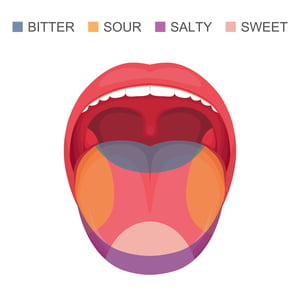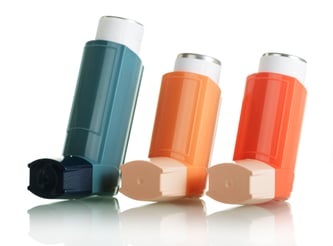Stay on Schedule
Establish a routine for taking medication. This will ensure that dosing stays as prescribed and it also makes it less likely that you’ll forget and skip a dose.
If you accidentally miss a dose ask your doctor or pharmacist for clarification but usually it is recommended that you do not double the dose. Just take the regular dose and get back on schedule.
There are many tools available to help you remember to take your medication. Use a written schedule, buy a box divided into days, set your phone alarm or download a scheduling app.
If you are having side effects from a particular medication don’t simply stop taking it, let your doctor know as sometimes side effects can be eliminated with dosage changes.
Speak to Your Doctor about Side Effects
 It’s important that you don’t stop taking medication or alter dosages without speaking to your doctor. Your doctor may be able to suggest supplements or make small changes to your dose to lessen unwanted side effects. Please don’t just quit taking your medication, as it can be very dangerous.
It’s important that you don’t stop taking medication or alter dosages without speaking to your doctor. Your doctor may be able to suggest supplements or make small changes to your dose to lessen unwanted side effects. Please don’t just quit taking your medication, as it can be very dangerous.
If your medication makes you drowsy, your doctor may instruct you to take it closer to bedtime.
Some medications may cause nausea. In this case your doctor may want you to take it with food to lessen this effect.
Some side effects of bronchodilators include;
- Dry Mouth
- Dizziness
- Irritated Throat, Scratchiness
- Nausea
- Shakiness or Hand Tremors
Loss of Taste
Mealtimes can be especially challenging for those battling a lung disease. As a result malnutrition and excessive weight loss can be common. Many patients report that they don’t feel like eating and meals just aren’t enjoyable for them anymore. One reason could be taste dysphoria as a result of inhaled corticosteroids. This means that sense of taste is altered or sometimes greatly diminished. As a result, food doesn’t taste as good as it used to, or it can’t be tasted at all. Many have reported that prednisone leaves a slightly metallic taste, making food taste strange.
malnutrition and excessive weight loss can be common. Many patients report that they don’t feel like eating and meals just aren’t enjoyable for them anymore. One reason could be taste dysphoria as a result of inhaled corticosteroids. This means that sense of taste is altered or sometimes greatly diminished. As a result, food doesn’t taste as good as it used to, or it can’t be tasted at all. Many have reported that prednisone leaves a slightly metallic taste, making food taste strange.
To help with this problem, speak to your doctor or pharmacist. They may know what needs to be done to combat this problem. There are things that you can do on your own to help normalize your sense of taste.
- After using an inhaled medication, rinse your mouth well. This will not only prevent taste alteration, it will help prevent a common fungal infection called Thrush. Rinse with water and a teaspoon of baking soda for best results. You can also brush your teeth or use a tongue scraper.
- You may also try rinsing with mouthwash or chewing a minty gum to freshen your mouth after taking your medication. Cinnamon candy is also a good choice.
- When taking a medicine in pill form, consider buying gel pouches that encase the pill. This will prevent contact with your tongue to avoid the bitter, chalky taste that can come with taking pills.
- After you take your medication eat an orange or other citrus fruit. You may also try a glass of fruit juice. Citrus fruits are rich in vitamin C so it’s good for your immune system and can help rid your mouth of the taste of medication.
- Herbal teas may also help maintain a more normal sense of taste. They can help mask any medicinal taste and have the added benefit of helping to soothe inflamed throat or bronchial passages.
Long Term Side Effects
According to the Cedars Sinai long term corticosteroid use can lead to decreased bone density. This can be especially dangerous for postmenopausal women who may have bone density issues already. To counteract this, speak to your doctor or nutritionist about calcium or vitamin D supplements.
 Calcium has several important functions in addition to keeping bones strong. Calcium is also instrumental in making sure your blood clots normally and regulating muscle contractions, which includes your heartbeat. 99% of your body’s calcium is stored in your bones so if it is required to perform one of these other functions and you are not getting enough nutritionally, calcium is mined from the bones and teeth, making them weaker.
Calcium has several important functions in addition to keeping bones strong. Calcium is also instrumental in making sure your blood clots normally and regulating muscle contractions, which includes your heartbeat. 99% of your body’s calcium is stored in your bones so if it is required to perform one of these other functions and you are not getting enough nutritionally, calcium is mined from the bones and teeth, making them weaker.
The most common dietary source of calcium is dairy foods. Some respiratory patients have reported that too much milk or cheese will cause their mucus to thicken. If you don’t have this particular sensitivity, dairy is a good option for you. But if you do, there are plenty of healthy foods that contain calcium. You should consider adding calcium rich foods to your diet such as;
- Kale
- Bread or Anything Made with Fortified Flour
- Sardines
- Spinach
- Beans
- Lentils
- Almonds
- Tofu
- Figs
Your body produces Vitamin D as a reaction to sun exposure. Therefore in the winter, when you are outside less, it’s important to add some Vitamin D rich foods to your diet. Vitamin D is an essential element for bone health. It actually helps to regulate how much calcium is in the body.
In addition to that, Vitamin D is especially important for respiratory patients. According to many studies, including this one reported in the Canadian Respiratory Journal, Vitamin D deficiency increases the risk of developing chronic lung conditions. It also is thought to increase the rate of lung damage in those battling COPD or other respiratory diseases. As we said, sunshine is a calorie free source of Vitamin D. Dairy products also contain Vitamin D. In addition, consider eating;
- Oranges or Drinking Orange Juice
- Beef Liver
- Fatty Fish, such as salmon, or tuna.
- Crimini Mushrooms
- Pork Chops
- Eggs
- Fortified Cereals
Correct Inhaler Use
According to a study reported in the European Respiratory Journal, an alarming number of respiratory patients aren’t using their inhalers correctly. Researchers attached sensors to inhalers used by asthma and COPD patients. After analyzing this data, they identified problem areas and concluded that nearly ¾ participants were making at least 1 mistake in their use. Of the patients studied they found that very few had been instructed on inhaler use either by their doctor, respiratory therapist, or pharmacist.

Follow directions regarding dosage and spacer use from your doctor or respiratory therapist. If you have questions about how to take inhalers or other medication, don’t guess; ask your pharmacist or other health care professional.
The proper procedure for inhaler use is:
1. Shake the inhaler at least 10-15 times.
2. Stand up. This allows your lungs to empty fully and inhale more deeply.
3. Blow as much air out of your lungs as possible.
4. Place the inhaler between your teeth and over your tongue, creating a tight seal with your lips.
5. Look straight ahead. Leaning your head forward or back will prevent the medicine from going further than your mouth. Aim toward the back of your throat.
6. Slowly begin to inhale and after you’ve begun to inhale, then press the inhaler. If you press before you inhale, you won’t inhale as much medication.
7. Inhale as long and deeply as possible.
8. Hold your breath for a few seconds.
9. Rinse your mouth and spit the water out. This will help prevent or lessen some of the side effects and reduce your chance of developing thrush.
10. If you require a second dose, wait at least a minute before administering.
If you feel that you cannot inhale deeply or quickly enough in one breath, speak to your doctor about a spacer if one has not already been provided. A spacer is a plastic chamber that is between your mouth and the inhaler. The medication is released into the chamber so that you can more easily inhale it.
For further information on inhaler use, please watch this video:
Supplemental Oxygen
If your doctor has put you on oxygen, consider it another prescription item that should not be discontinued or altered without speaking to your doctor. Sometimes patients start to feel out of breath so they increase their flow rate. This is not generally effective for breathlessness and it can also be very dangerous.
In addition to your daily medications, there are some that are equally important.
Antibiotics
Sometimes antibiotics may be prescribed if a severe exacerbation has occurred or there is a bacterial infection present that poses a respiratory health risk. Be sure to use as directed and set a reminder on your phone or place visual reminders around the house so that you do not miss a dose. Even if you start to feel better, do not discontinue use until the full supply has been exhausted. If you do, the infection may reoccur and may even become more severe.
Vaccinations
In addition to regular medication it is vital that respiratory patients get recommended vaccinations. A bad case of the flu or pneumonia will likely end in further lung damage that is not reversible.
Flu vaccination should be obtained yearly. Keep in mind that the immunity takes up to two weeks to be in effect after you’ve been inoculated. The vaccine generally lasts around 6 months but weakens with each passing month. Therefore, you’ll want to get vaccinated slightly before flu season starts to ensure that you’re immune once exposure is possible. However, you don’t want to get it too early leaving you vulnerable in the early spring when cases still occur. Sometime in mid-October is ideal.
Pneumonia vaccine is also recommended. This vaccine is generally not annual but it’s important that you keep up on booster shots to ensure immunity. There are a few different types of Pneumococcal options available. Speak to your doctor about the one that is best for you.
The CDC also recommends getting vaccinated against Whooping Cough. Most of us were vaccinated against this as children but 10 year booster shots are recommended.
Conclusion
Gone are the days when you saw the same doctor for decades so that they were extremely familiar with your condition. Now most healthcare providers are run like giant corporations where efficiency and return on investment if prioritized. When you arrive for your appointment you’re placed in a room along a hallway with several other patients in rooms. Nurses or medical assistants will come in, take vitals and ask for preliminary information. Eventually the doctor will come in, look over the information, and perform further evaluation. Studies have shown that most patients see their doctor for less than 10 minutes per visit.
At the pharmacy the pharmacist is generally in the back filling the medications while at the counter an assistant or even a cashier will give you your prescription. The prescription will usually contain written instructions but the pharmacist will rarely come out to speak with the patients.
While this system may work best for the bottom line of the health care companies, patient education has suffered. When you’re at the doctor or pharmacy, don’t let yourself be rushed. If you are unclear about something or need clarification, ask to speak to the pharmacist or have the doctor go over procedures with you until you are clear on what you should be doing.










